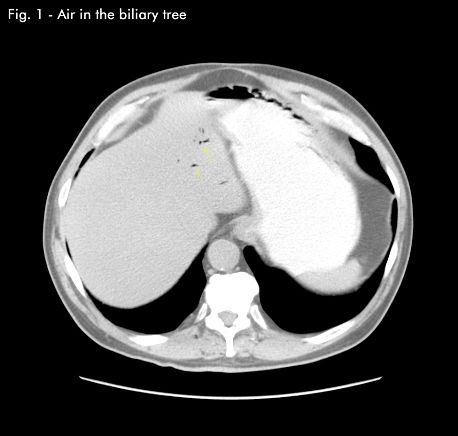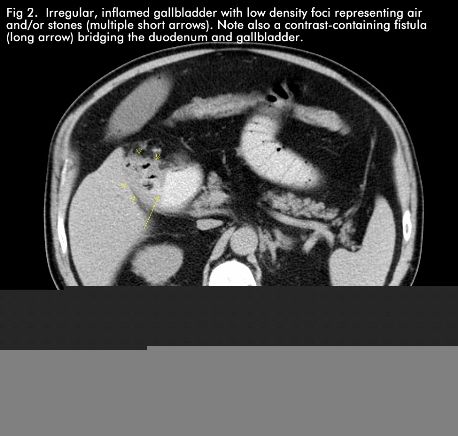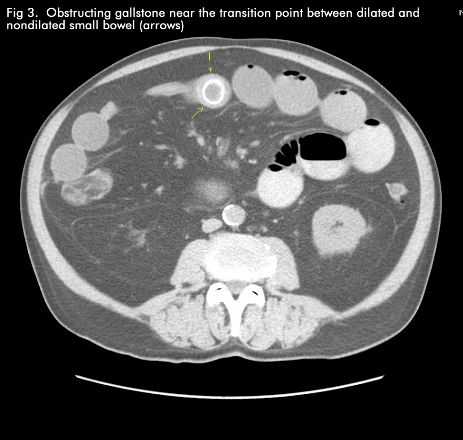Gallstone Ileus
A 70-year-old patient recently presented to an emergency department with a history of abdominal distention, pain and brownish emesis.
History
A 70-year-old patient recently presented to an emergency department with a history of abdominal distention, pain and brownish emesis.
CT with oral contrast demonstrated dilated proximal small bowel loops and relatively collapsed distal small bowel loops, representing small bowel obstruction. There were also linear foci of air in the liver (Fig 1), initially concerning for bowel ischemia with portal venous air, but upon closer inspection, the air was recognized to be within the biliary ducts.

The gallbladder was irregular and inflamed (Fig 2), and cholecystitis was considered, although the coexistence of a bowel obstruction was considered unusual. Tracing the dilated bowel loops to the point of obstruction demonstrated a 2-cm calcification (Fig 3) that was recognized as a gallstone. Reevaluation of the gallbladder demonstrated a fistula between gallbladder and duodenum (Fig 3).


Diagnosis
Gallstone Ileus
Gallstone ileus is not a true ileus but actually a small bowel obstruction that occurs following a severe bout of cholecystitis, when a gallstone erodes through the gallbladder wall and into the bowel, typically the duodenum, although perforation and fistulization to the colon and stomach can also occur. Gallstone ileus occurs in less than 1% of patients with cholelithiasis but in about 1 in 6 patients with gallbladder perforation. Biliary air is seen in 69% of patients, and an ectopic gallstone is identified in 25%. Surgery is indicated, and there is high mortality.
Case provided by Imaging On Call

Can Ultrasound-Based Radiomics Enhance Differentiation of HER2 Breast Cancer?
March 11th 2025Multicenter research revealed that a combined model of clinical factors and ultrasound-based radiomics exhibited greater than a 23 percent higher per patient-level accuracy rate for identifying HER2 breast cancer than a clinical model.